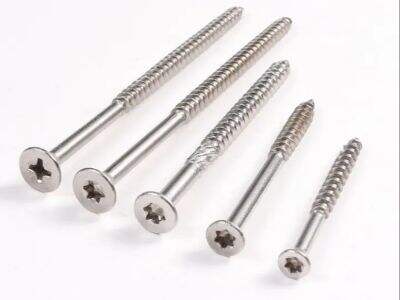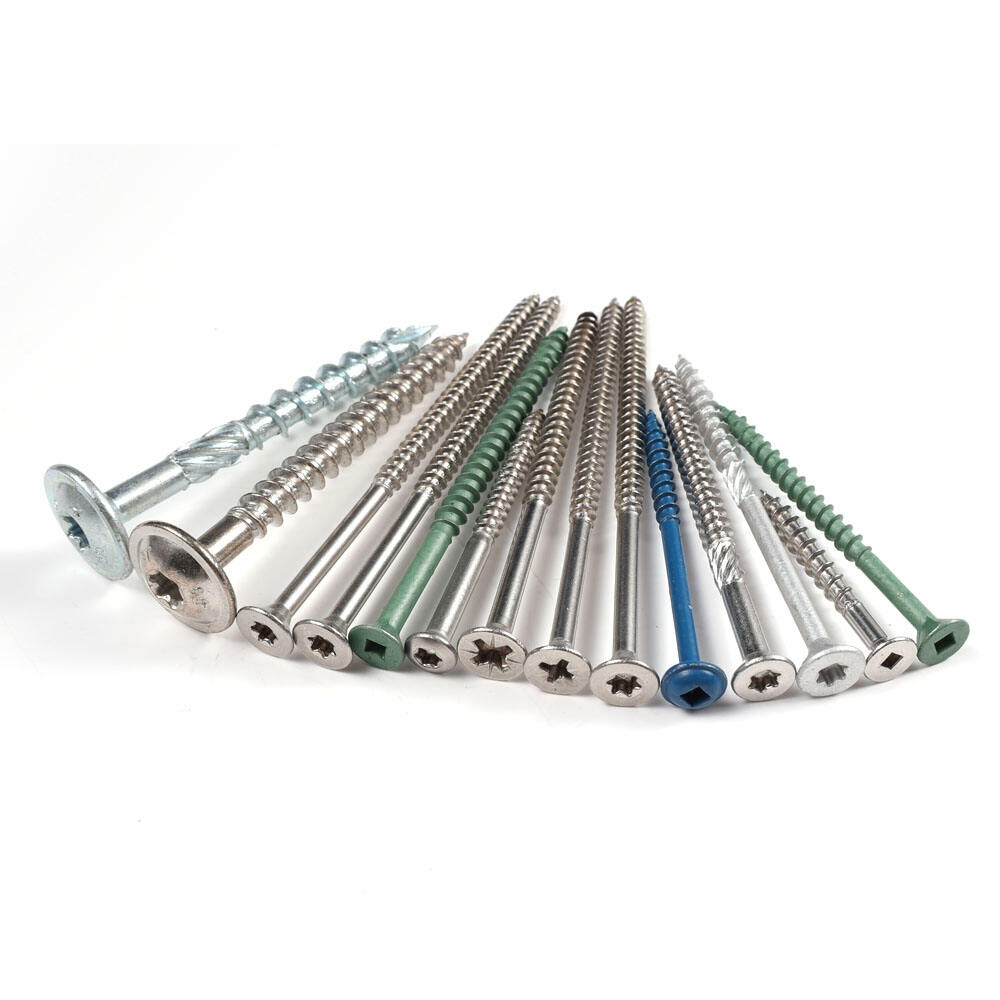Many years ago people needed something to join pieces of wood together with. So, they were in pursuit of a robust solution for it. So, they created the wood screw. Ever wonder how a Wood Screw is made? In this post, we are going to dive into how a wood screw by Wuxi Sunny is made step-by-step.

Introduction
A wood screw has its beginning as a long, thin steel wire. This is no ordinary piece of metal, but a specially selected one for its durability. The first operation in the production of a screw is known as cold heading. It is the process of molding a specific metal piece into screw-like shape. It is kind of like when you shape clay. The screw then moves to a machine called a "lathe". It spins the screw and cuts big grooves in it.
Threads are that which is Here we have the grooves that are cut into a screw. These threads are most related for the reason that they assist to cling onto the screw within the wooden. Frets hold the wood together, no threads and you'd be kind of screwed. The screw is heated and threaded in one or two more important steps. This requires that your screw be heated to a high temperature followed by really fast cooling. This process makes the screw even more durable and thus can keep heavy things in place without either bending or breaking.
With the screw shaped and strong, it goes through a special process now known as "coating. Many coatings are available for screws, but the original idea around a coating is to make them more resistant against corrosion and easier to drive into wood. These can be comprised of special material like zinc or chrome for added protection, while others are just painted to make the screw look nice.
With the coating applied, it’s time to box up your screw. It is an exciting step, as it means the screws are nearly ready to be shipped out into shops for people to buy. The screws are sized and loaded into bags or boxes then shipped off. And there you have it; the birth of a wood screw.
But what would the factory that produces wood screws look like? A factory screw is the output of several machines working in unison like a well-oiled team. Every single machine is put to play a separate role in the development process.
Cold Heading Machine
This is the first one. A machine that takes long pieces of metal and makes them into a screw shape. The metal pieces are clamped down and slowly amorphous as they go in to the machine. After which the screws were shifted to a conveyer belt (moving sidewalk) and makes their way towards lathe. A lathe is where the threads are cut, providing screws with this unique holding feature.
The Stainless steel square head screws heat treatment stage is later made on the threading machine, which further solidifies this part of the screw. This process heats the screws to an immensely high temperature before blowing them with cold air, making a screw even more sturdy and robust. The treated screws are then coated for safe use.
To end, they pack the screws and bring to customers. Size: sorted by size so people can easily find corresponding screws for their project. The screws are then bagged or boxed to allow the transportation onto retail, next stop stores.
Wood Screw Manufacturing
It can't be easier than making wood screws, but it is there are many key steps. All these steps were thought out to maximize the integrity of the screw and give it more durability. Let us go through each step to understand it in detail.
Making a wood screw starts with the cold heading process. One is the process of extruding where long metal bars are essentially twisted into the shape that you recognize as a bolt. The parts are put in a device that holds them and trims the exact dimensions of parts.
Now the screw goes to lathe. The machine then spins the screw very fast as it cuts grooves, or threads, into a regular full-length shank. It is what helps the screw dig into the wood and stay put.
Once that process is through, the final step: heat treatment. A machine called the screw is heated in a like-oven and then cooled rapidly. This process will beef up our screw so it can carry large loads without bending/breaking.
Sprays, in the meantime are added to ensure that screws do not rust and penetrate wood more easily. Zinc is common on many bolts, as are chrome and painted finishes. Not only do these coatings protect the screw, but they also help it to be more aesthetic.
At this point, screws are assembled into final assemblies and shipped to our customers. The sorted by size and packed in bags or boxes alike to reduce their volume during transportation.
Conclusion
So with all that said, it seems like wood screws are simple products but the way there made is very intricate. Each process from cold heading to heat treatment must be performed correctly in order for the screw to grip wood securely and last well into the future. Now, consider the laborious process that went into creating a wood screw next time you use one.
 EN
EN
 AR
AR
 BG
BG
 HR
HR
 CS
CS
 DA
DA
 NL
NL
 FI
FI
 FR
FR
 DE
DE
 EL
EL
 IT
IT
 JA
JA
 KO
KO
 NO
NO
 PL
PL
 PT
PT
 RO
RO
 RU
RU
 ES
ES
 SV
SV
 TL
TL
 IW
IW
 ID
ID
 LV
LV
 LT
LT
 SR
SR
 SK
SK
 SL
SL
 UK
UK
 VI
VI
 SQ
SQ
 ET
ET
 GL
GL
 HU
HU
 MT
MT
 TH
TH
 TR
TR
 GA
GA
 UZ
UZ


